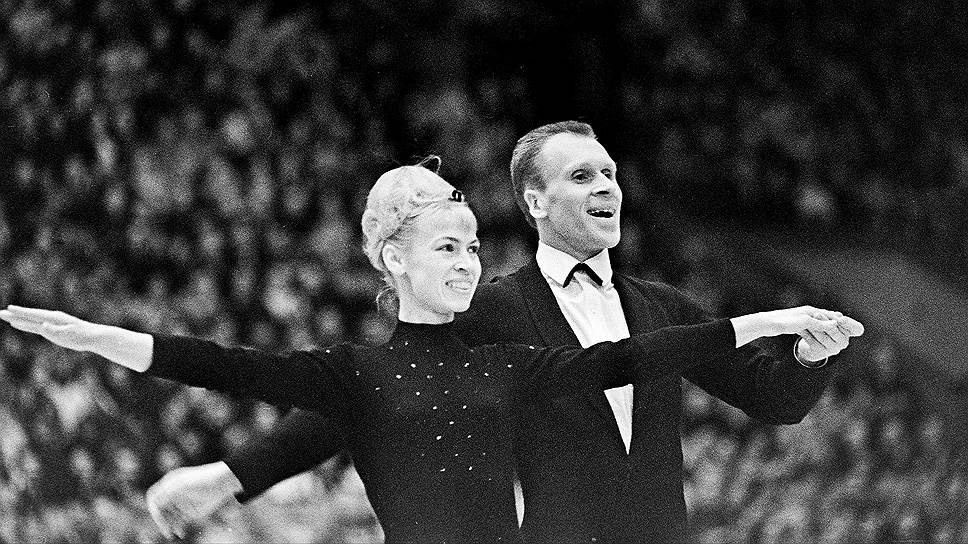Figure skater Oleg Protopopov died in Switzerland. Obituary
[ad_1]
Oleg Protopopov died at the age of 92 at his home in Grindelwald, Switzerland. With his victories in the 1960s, including two Olympic ones, together with his wife Lyudmila Belousova, who left six years earlier, the rise of domestic figure skating began, its still ongoing “golden era”. Although in fact this duet was too special, too unique to be ranked in some kind of, even very honorable, heroic row. And the famous escape of Belousova and Protopopov from the USSR for the sake of performing in professional shows only emphasized their absolute non-systematic nature.
This great couple, like any unique masterpiece, arose despite the circumstances. In 1947, Oleg Protopopov, who had just started figure skating, was already 15 – too late to dream of serious achievements. And the fragile girl Lyudmila Belousova, by the time several years later Protopopov, who had accumulated some experience in pairs, had given up this genre, not seeing any prospects, in order to become a singles skater. But they, two strangers, for some reason decided to try skating together and never parted again – neither on the ice nor off it. This is how not a sports duet arose, but a sports union, which, under the leadership of Leningrad coach Igor Moskvin, began to conquer the seemingly inaccessible peak.
Nowadays, domestic successes in figure skating, including pair skating, seem to be something absolutely natural. In those days, the leaders were others – North Americans, Europeans. Belousova and Protopopov started at the major tournaments from positions outside the top ten, but year after year they moved closer to the front men. And at the 1964 Olympics in Innsbruck, a miracle happened. Her favorites, the Germans Marika Kilius and Hans-Jürgen Bäumler, who had just once again beaten the Soviet pair at the European Championships, finally lost to her, who charmed the judges with too flawless a performance.
And then there was a period of absolute hegemony by Lyudmila Belousova and Oleg Protopopov, who won gold after gold at European and world championships.
A period of admiration by the whole world for a real sporting anomaly.
Their programs are still being reviewed today to see what it is like – when complexity and simplicity are combined so organically that these concepts themselves lose all meaning. The theme of the programs is always the same – love, romance. Musical accompaniment – classics: Beethoven, Saint-Saens, Rachmaninov. And on the ice there are two skaters who don’t seem to do any mind-blowing tricks, don’t play hard, but still attract the eye.
Then, after a while, you understand why: the fact that it seems as if in front of you are not two people, but something completely whole, inseparable, welded tightly together.
And the word “synchronicity” alone cannot explain this feeling of wholeness. It cannot be explained even in the words of Protopopov himself, who said that he and Belousova, in order to create an effect that captivated both the audience and the referees, tried to stay as close to each other as possible during the skate. This monolithic effect still contains more metaphysics than earthly things.
In the 1960s, pair skating was already decisively moving in the direction familiar to the modern generation, towards increasing the difficulty of technical content – primarily lifts and jumps. And Lyudmila Belousova and Oleg Protopopov seemed to refuse on principle to go with the flow. They have “named” elements. But they – the gorgeous spiral-todes, which the skaters called the spirals of life, love and death – unlike the more valuable acrobatic things from the point of view of evaluation, fit perfectly into their special style, which was useless and pointless to copy.
He brought Belousova and Protopopov, who existed as if in a separate universe that ignored generally accepted laws, another Olympic gold – in Grenoble in 1968. After him, those who grasped the trends more firmly came to the forefront. A new era has opened in pair skating – with the fiery and fearless Irina Rodnina in the status of a beacon. And Lyudmila Belousova and Oleg Protopopov, who did not make it to the 1972 Olympics in Sapporo, were sent from sports to the Leningrad Ice Ballet. They served in it until their escape on a Swiss tour in 1979, which turned legends in persona non grata for the USSR, whose leaders, naturally, never wanted to tell why Belousova and Protopopov actually remained abroad. They were definitely not interested in money, and they managed to never accumulate the capital that would allow them to lead a comfortable lifestyle like that of other sports superstars.
They were solely interested in the opportunity to continue performing – not in ice ballet, but in real figure skating.
And professional tournaments were inaccessible to Soviet figure skaters. At these tournaments, Belousova and Protopopov, with their never-fading repertoire of classics and love, were received, despite their advanced age, no less warmly than much younger idols.
However, even they did not seem, even when in 2003 For the first time since escaping, they came to their homeland at the invitation of the head of the Russian sports industry, Vyacheslav Fetisov, athletes whose careers date back to the 1950s. From them and the elderly, paradoxically, there was a breath of fresh youth, as if time had forgotten about its unshakable principles in relation to two eternal lovers who lived their lives outside of any systems.
[ad_2]
Source link










